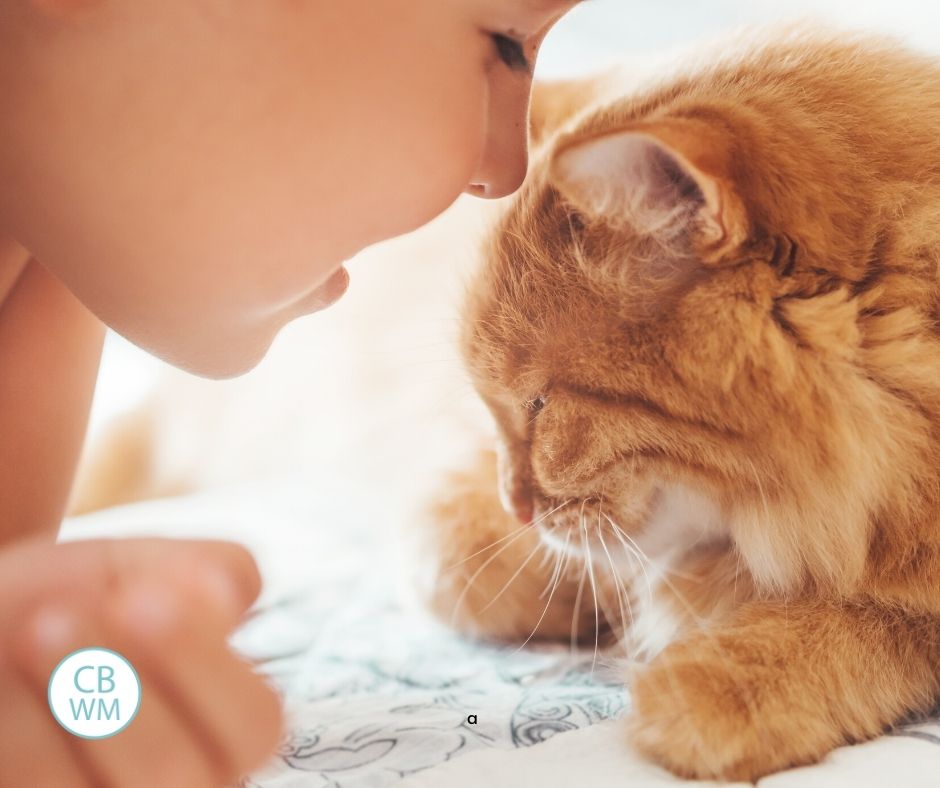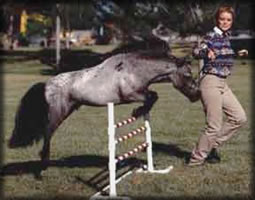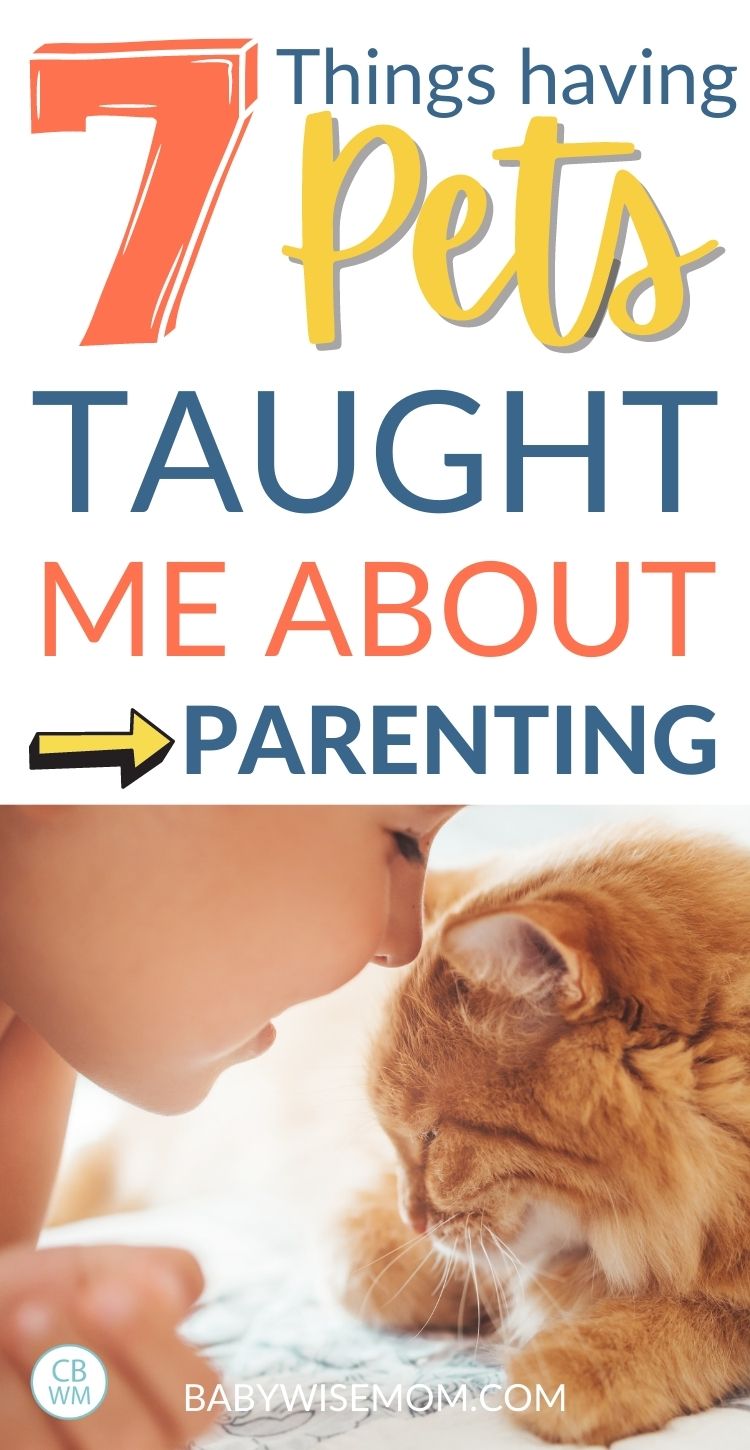Pets are more than just fun for kids. They actually teach a lot of valuable lessons, including how to be a great parent someday.

When I was growing up, I had all kinds of pets.
We always had pets and always had a lot of pets at once. We had the standard for our area of the world: dogs, cats, and fish. We also had less common but not outside the range of normal with birds, hamsters, gerbils, and rabbits.
We also had less common horses, miniature horses, sheep, and pygmy goats.
Among those animals, I helped train many of them and I showed miniature horses and lambs. Needless to say, I had a lot of experience working with animals.
Now that I am a parent, I am less enthusiastic about pets. They take time, money, and attention I would rather be spending on my children. As a child, my pets were the things I loved and nurtured.
As a mother, I have my children. As anyone who has had a puppy before can attest, a puppy is much like a toddler so far as time and attention required along with messes made.
Despite my lowered enthusiasm level, we have dogs and cats. We have also had rabbits and fish.
Post Contents
Having Pets as a Child Made Me a Better Mother
As a parent, you do a lot of pondering on what made you into the person you are–more specifically the parent you are. In my reflections, I have been surprised at how much impact taking care of pets has had on me as a parent.
Because of this, I have a strong value for my children having pets.
A secret really known among mothers is that the person who takes the most care of a pet in the family is mom.
Our first night home with a new puppy when Brayden was barely a year old taught me that lesson. I realized my mom did a lot more than I ever knew she did.
So yes, pets are a lot of extra work for mom.
Most moms aren’t really looking for ways to fill their time–it is pretty well filled already. Despite that, I know there is value in pets so I am willing to put that time in.
So what did I learn that was of such great worth? Here it is:
How to Nurture
As I watch Kaitlyn oogle over her cats, I can see how much having a pet feeds that natural nurturer within you.
You love the animal. You hold, pet, hug, and/or talk to this animal.
The great thing about many pets is the amount of love you receive in return. It really helps you develop your nurturing abilities.
How to Provide
Even if a parent is in the background making sure things get taken care of, having a pet teaches you how to provide for another living animal.
It teaches you about putting others before yourself. Growing up in a farming community, there were certain rules people lived by. “If you wouldn’t drink from the bucket, don’t make your animal drink from it” and “Feed your animal before you feed yourself” are a couple of rules that come to mind.
Having pets teaches you responsibility and it helps you understand the meaning of another living creature being dependent on you for life.
How to Teach
Training an animal teaches you a lot about how to train and teach anyone. You quickly learn that an animal will take a mile if you give an inch and that positive reinforcement enhances the behavior you are seeking.
Children are of course much smarter than animals, so in many ways they are easier and in many they are harder. They are better able to test limits, but also pick up on things faster.
Another valuable lesson from animals and training is that it takes time and repetition to learn a new skill. A puppy isn’t shown how to “sit” one time and then is a master at it from that point forward. It takes time, patience, and consistency to get there.
There are also many mistakes and accidents as an animal learns a new skill (especially potty training). This is also true for children.

How to Discipline
When I showed miniature horses, I showed a stallion. He had a full-sized personality in a small little body.
One class we did was an obstacle class. In this class, we had a shape on the ground (typically made from PVC pipe) where I was to lead my horse, drop his lead line, walk all the way around him, and then pick up his lead line. His job was to stay in the shape.
My stallion and I were incredible at this task. I was not the type of trainer that used a whip or ever hit my animal–that has never been my way. I have a nice firm voice and a killer “mommy glare.”
We trained in a small field next to a pen where we kept a full-sized gelding. This little stallion loved to try to attack the gelding (for those who don’t know, a gelding is a male horse who has been neutered).
I would drop his lead line, and he would make a run for trying to get to that gelding. I would grab his lead line, force him to look me in the eye, and tell him that was not acceptable.
I got that horse to hold perfectly still in that field. If he so much as moved his head to the side, he got the eye glare and lecture. In our halter class, the only muscle he would move was his eyes as he watched me walk around him. The judges were always impressed.
The eyes are also very important in dealing with dogs and above all cats.
I learned about the power of love and trust when working with lambs. A lamb who trusts you is easily led without a halter. A lamb who does not trust you is practically impossible to move even with a halter.
I also learned about dealing with trying to train a cat (not easy)–essentially akin to a strong-willed child
Through training my animals, I learned a lot about discipline. I learned about consistency, eye contact, and the power of a look. I also learned about the importance of love and trust.
How to Work
Animals take work to feed, water, clean up after, and groom. Then you need to make sure they get plenty of exercise and love. Some you even have to potty train. Sound familiar?
How to Schedule
My animals were fed and exercised on a schedule, and they were hungry at the times they usually got fed. When I became a mother, I had no problem understanding that eating at the same time of day=hungry at the same time each day.
I also learned how to balance time between caring for the animal and attending to my other responsibilities. I learned how to schedule myself to get everything done I needed to.
How to Understand Non-Verbals and Non-Talkers
Animals don’t really talk–not like humans do. Some pets, like parrots, can be trained to say words, but you won’t be having any real conversations to get at the heart of the needs of the animal.
Children are the same. As babies, you need to learn to recognize what different cries sound like (I could totally tell you exactly what my cat wanted by the way she mewed) and what their non-verbal language is telling you.
Toddlers and even preschoolers are very much the same. Even though they can talk, they have a hard time verbalizing what it is they want and need for quite some time.
I learned to recognize boredom, hunger, and even “I am about to be naughty” to name a few. This was a great skill to transfer over into being a mother. I already had experience in reading non-verbals and listening to tones from my animals.
So What?
You might be wondering that. So what?
I share this because I don’t think it is something you would know unless you have a similar experience.
I share it because I think having a pet is very valuable in preparing our children for their futures.
So if you are inclined to have a furry friend at your home, I would encourage you that despite the difficulties, it can have some great value for your children.
A pet can be a great pal, and it can be even more than just that. Your child can learn valuable skills that can help greatly down the road.
We aren’t just raising children. We are raising future adults.
Related Posts

